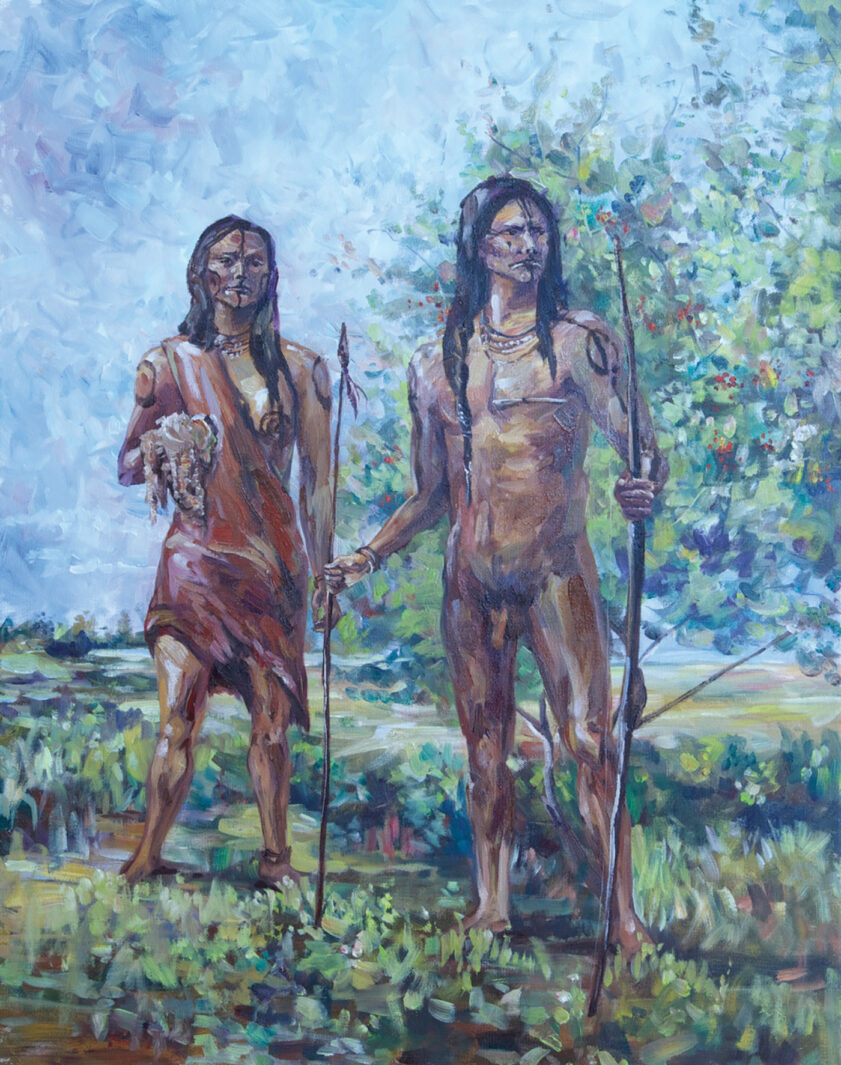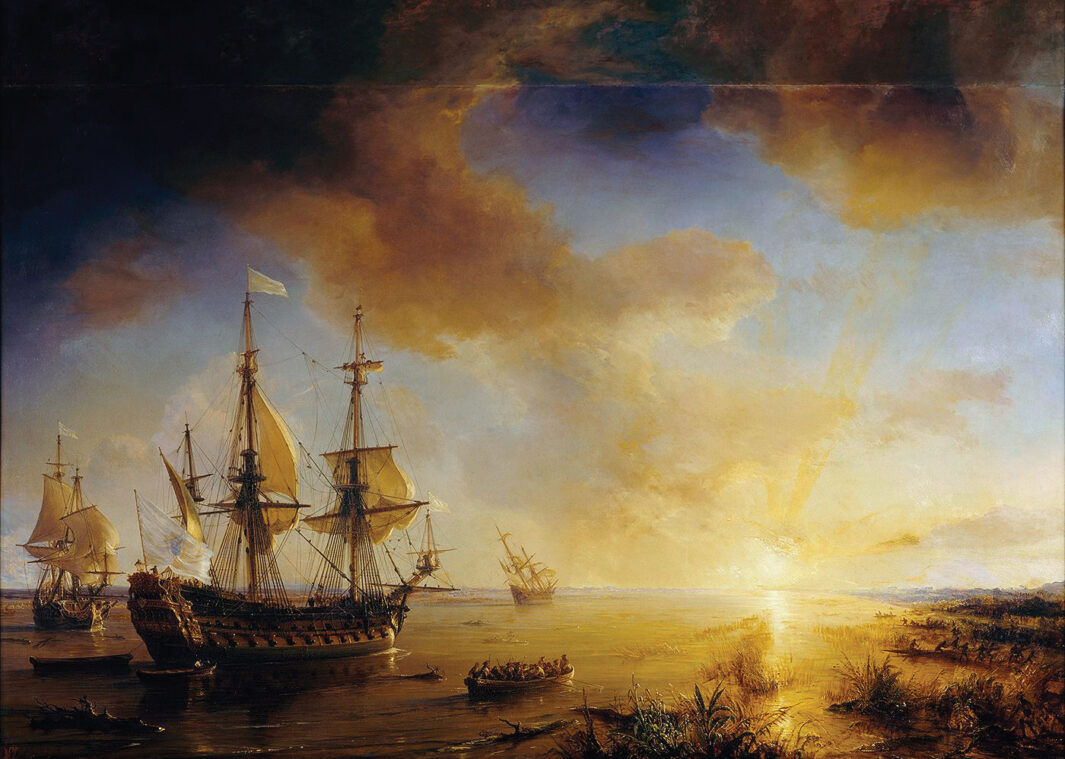
“There is a history in all men’s lives,” Shakespeare wrote. He might have added, more strikingly so in some than others. That was certainly true of Robert Talon, a master cabinetmaker and churchwarden in 1721 Mobile. To a degree, of course, all those colonial lives seem more dramatic compared to those of our modern selves. After all, they inhabited a very different world where the divine right of kings, uncharted lands, powerful Indian nations, sailing ships, muskets and petticoats were everyday realities. But Talon’s saga must have impressed even his contemporaries as particularly remarkable.
He was born at sea in the autumn of 1684, the sixth child of Lucien and Isabelle Talon. Lucien, a carpenter and soldier, and his young family were part of Robert Cavelier de La Salle’s Mississippi Valley colonization effort, an attempt to claim North America’s midsection for the French King. Such a move would hem the British on the Eastern Seaboard and threaten New Spain’s (Mexico) silver mines, an important strategy indeed. Little Robert’s birth, after a successful Atlantic crossing when the ships stood off the island of Saint-Domingue (modern Haiti), surely filled the colonists with hope for the future. La Salle served as the honored godfather, and the parents gratefully named the child for him. Isabelle doubtless placed more importance on the fact that the king offered ennoblement to the first child born in the new colony. By her lights, the ships were the colony at that moment, and her family’s prospects could not have appeared brighter.
Unfortunately, La Salle proved ill-suited to the rigorous demands of a howling wilderness. Afflicted by contrary weather, the loss of two ships, inaccurate maps, imprecise navigational instruments and debilitating bipolar disorder, he steered his vessels well west of the Mississippi River, landing his people in what is now Texas. Onshore, hostile Karankawa Indians, sterile soil, disease and personal rivalries dogged the endeavor. Nonetheless, the French managed to bang together several shelters and place a few cannons inside a rickety palisade on Garcitas Creek, across Matagorda Bay. Isabelle attempted to make a home with the children there, gardening, cooking and tending chickens. Day-to-day life was difficult, however. One daughter took sick and died, and then Lucien disappeared, never to return. Whether he simply got lost in the trackless forests or fell to Karankawa arrows, Isabelle never knew.
La Salle, cognizant of his dwindling numbers and desperate circumstances, took 17 men and set out for distant Canada and much needed aid. One of Robert Talon’s older brothers, 10-year-old Pierre, went along and witnessed La Salle’s subsequent murder by frustrated men in the party. Compassionate Hasinai Indians adopted Pierre, who lived with them until a Spanish expedition discovered and ransomed him. As for Isabelle, little Robert and the other adults and children at the settlement, some two dozen in number, they awaited whatever fate had in store. It came in the form of a Karankawa surprise attack. The Talon boys and their sister witnessed their mother’s murder along with that of almost every other adult. Amid triumphant whoops, the Karankawa torched the rude shelters, killed the livestock and scattered the settlers’ belongings. The children escaped death when Karankawa women took pity on them, hoisted them onto their backs and carried them away.

According to a Spanish chronicler who later interviewed the children, they “were reared and loved by these same savage women … as if they were their own children.” Robert acquired tattoos on his face, hands and body just like the native Karankawa. He learned to hunt and forage, quickly forgetting his native language. Eventually, the same Spanish patrol that ransomed Pierre also retrieved Robert and their other siblings. The patrol took the children to Mexico City, where they served in the viceroy’s household. Robert and his sister, Marie-Madeleine, were special favorites and acquired the manners and tongue of the Spanish court. While there, they witnessed the 1692 corn riot, provoked by crop failures and the grinding poverty suffered by Mexico’s large indigenous population under the Spanish yoke.

Four years later, Robert and Marie-Madeleine accompanied the viceroy and his wife on a trip to Spain. The three older brothers served in the Armada de Barlovento, or Windward Fleet, which protected New Spain against foreign marauders. A French warship captured these boys after a brief battle. Returned to France, they subsequently joined Pierre Le Moyne d’Iberville on his second Gulf voyage. They served as soldiers at Fort Maurepas (Biloxi), where their frontier knowledge stood them in good stead. Marie-Madeleine eventually moved to Paris, where she married.
As for Robert, at age 30 he, too, made his way to France, and like his older brothers ended up in colonial Louisiana, settling at Mobile, its first capital. Talon prospered there, marrying a woman named Jeanne Prot, with whom he had two sons, born in 1719 and 1721. He also kept six enslaved people, five Africans and one American Indian. His neighbors were a diverse lot—Parisians, Normans, Canadians, Apalachee Indians, Mobile Indians, and Senegalese and Yoruba slaves. But surely the tattooed young carpenter born on a rolling deck and named after a doomed explorer could have held his own as a storyteller. After all, few such as he could claim direct experience within three distinct cultures jostling one another in an expansive new land.
John S. Sledge is working on a book about Mobile and Havana’s centuries-long shared history.





